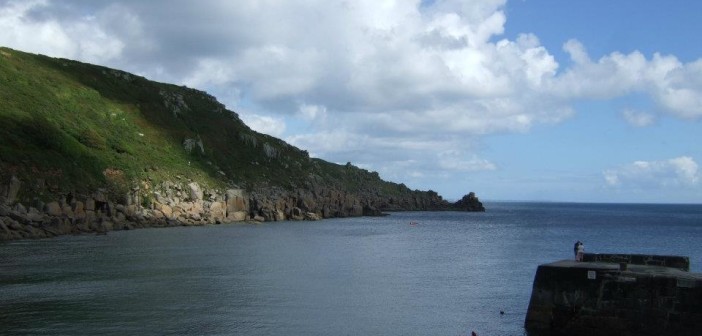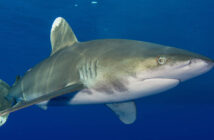If you mention the South West of England to most people, they think of Devon and Cornwall, of rich cream teas, sparkling apple cider, hot Cornish pasties, surfing, old English pubs and a laid-back lifestyle associated with decades long gone by elsewhere in the world. Did you know that the South West is also home to some of the best dive sites in Europe? If you’re prepared to dip your toes in the temperate waters off Britain’s coastline you will be rewarded with wreck dives, sea caves, reefs and an incredible array of wildlife including seals and Basking sharks. There are plenty of dive sites suitable for PADI Open Water qualified divers and equivalent and those look for more challenging dives.
The average water temperature range is 6-10 °C in winter and 15-20 °C in the summer months. The diving season is year round, often with the best water visibility in winter, and the warmest months in the water are September and October. You can forget your 3mm suit when it comes to diving these waters. Instead, a dry suit and thermal undersuit are highly recommended, though you could also get away with a 7mm suit, hood and gloves. You’ll be wanting to pack a woolly hat and multiple flasks of hot drinks.
Here are some of the best places for diving in the South West:
Lundy Island, Bristol Channel
Lundy Island is the largest island in the Bristol Channel and lies 12 miles off the coast of Devon. It is a Marine Conservation Zone and has dive sites that include natural reefs, sea caves, pinnacles and fantastic diving with seals. It is known as one of the best dive sites on offer within the UK.
Lundy itself is not a dive centre and access to the dives of Lundy can be organised with a charter boat operator or the mainland or with your own vessel. There are a number of operators and a must-read Lundy dive guide (including all logistical options) at Lundy Marine Conservation Zone diving. Dive sites are suitable for novice and experienced divers and there are also summer Snorkelling Safaris on offer during the summer months.
The Scilly Isles
This isolated archipelago lies off the southwestern tip of Cornwall and is the southern most location in England. The islands are unspoilt, have been designated as an Area of Outstanding Natural Beauty and offer a haven for various species of fauna and flora. The Scilly Isles have a mild climate and offer some of the best diving in the UK; including over 150 dive sites, wrecks, pinnacles, reefs and the opportunity to dive with seals.
Try Dive Scilly and St Martin’s Dive School for your island diving experience. There are dives suitable for all diving abilities.
HMS Scylla, Plymouth
Scylla, a Leander-class frigate of the Royal Navy was sunk in 2004 and she is the UK’s first artificial reef. The Scylla is sitting at a depth of 24m and is home to many species of protected British marine life. This wreck is not currently considered safe to penetrate due to recent degradation but it offers an excellent exterior dive and introduction to British diving.
There are various dive operators in the Plymouth area, including Plymouth Diving Centre, South West Diving and Discovery Divers. More dive condition information can be found at Dive Scylla. The Scylla is suitable for Advanced Open Water divers, though it can also provide an interesting wreck training dive with supervision.
The Manacles, The Lizard Peninsula
The Manacles are a set of rocks off the coast of Cornwall that are home to a number of shipwrecks that provide great wreck diving opportunities. The granite reef is known for scenic dives including shallow reefs, drop offs and pinnacles with an astounding diversity of marine life.
Try Porthkerris Divers for the Manacles and the SS Volnay (see below). The dives at the Manacles range in depth from 8 to 80m and are suitable for novice and experienced divers.
SS Volnay, Porthkerris
The SS Volnay was a general merchant ship that was sunk off Porthkerris in 1914 when she was hit by a mine 2 miels from Manacles Rock. She lies at approximately 20m depth and provides an interesting and popular wreck dive. Divers are advised to be on the look out for shells that still contain rusty coloured cordite; a potentially explosive substance.
Newquay Headland, Newquay
Newquay headland is a lesser-known dive site on the coast of North Cornwall but provides stunning scenery and a relaxed dive location. Newquay is famous for world class surfing yet this easy dive site is a must for any novice diver and for those hoping to see seals. There is plenty of fish life to be seen and four entry points to explore.
Try Atlantic Diver or Dive Newquay for guided dives and gear hire to explore the headland unguided.
Lamorna Cove, Penzance
Lamorna is a picturesque small cove and village in west Cornwall and offers an easy and interesting dive up to 12m depth. Be aware the cove gets busy in summer with limited car parking but is well worth visiting, with the opportunity to see sea grass, kelp and fish life. Night diving Lamorna Cove comes highly recommended and offers the chance to see cuttlefish. This dive site is suitable for novice and experienced divers and offers a great introduction to shore diving.
Try Atlantic Scuba for more information, gear hire and other guided dives in the locality.









